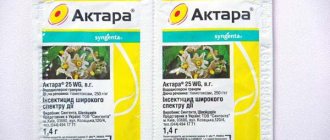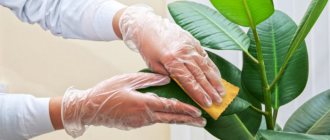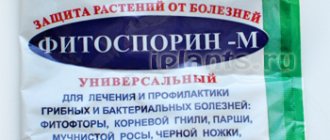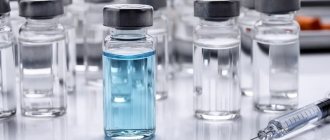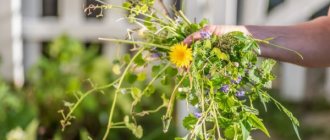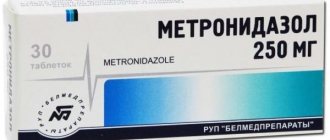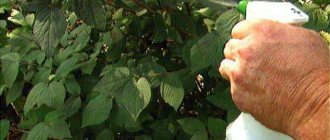Description and active ingredient of the drug "Aktara"
Release form
Aktara is available in the form of instant granules or suspension.
The granules are packaged in vacuum bags weighing 4 g. They are convenient for treating indoor plants, strawberries, as well as flower beds of violets, orchids and roses. Aktara is also sold in 250-gram bags. Such volumes are used for processing large garden plots, farms or plantations. There is also liquid Aktara. It is available in ampoules (1.2 ml) and bottles (9 ml). Aktara insecticide has a number of distinctive features that set it apart from the mass of other similar drugs:
- protection from many insect pests (about one hundred species);
- well absorbed by roots and leaves;
- speed of action (Aktara manifests itself already 30-60 minutes after treatment);
- active in all weather conditions;
- resistant to intense sunlight;
- long-term effect of the product (1-2 months);
- small consumption rate and infrequent treatments;
- toxins do not accumulate in the plant;
- high efficiency both when spraying stems and foliage, and when watering the soil.
Aktara helps improve the quality of foliage and fruits, helps get rid of pests and protects the plant from repeated attacks by insects. The period of protective action of the drug is 1-2 months.
Areas of use
Aktara is widely used in gardening and agriculture. This insecticide kills many of the most common insect pests. Among them:
- Colorado beetle;
- aphid;
- codling moth;
- scale insect;
- soil fly;
- thrips;
- whitefly;
- Chafer.
And this is far from a complete list. There is controversy regarding spider mites. Houseplants are often attacked by it. The instructions for the drug say that Aktara is ineffective against all types of ticks. However, many gardeners and housewives claim that in the event of a primary attack by this pest, the product copes with it quite well.
A product that paralyzes the activity of insects in the first minutes of exposure leads to the death of pests within 24 hours in open beds, in greenhouses or greenhouses, on berry bushes or fruit trees. Aktare is also capable of effectively protecting garden and indoor plants from soil pests.
The secret of the drug’s success is the main active compound – thiamethoxam, a representative of neonicotinoids. This is the name given to synthetic derivatives of natural nicotine, which are often used to control insect pests. But it is this substance – thiamethoxam – that is Aktara’s exclusive ingredient. It is not used in analogues. It acts quickly and accurately, achieving the desired result.
The enteric-contact principle of influence works as follows. A plant sprayed with Aktara against pests absorbs the toxic substance into the plant tissue. The poison is spread by juices throughout the green parts of the crop, without penetrating only into the fruits. Sap flow carries the insecticide throughout the plant body, poisoning a small bush in 3-4 hours, a large fruit tree - in a maximum of 3 days.
The leaf-eating, sap-sucking, gnawing insect, together with plant tissue and sap, ingests a nerve poison, which for them is the active component - thiamethoxam. Pests with thin sensitive integuments receive a lethal dose through surface contact with the poison. These include aphids.
Areas of use
To figure out how to grow Aktara for spraying or pouring soil, you don’t have to be a chemist or agricultural technician. The drug is used with equal success in large agricultural enterprises and private land ownership. Gardeners who do not have gardening experience use Aktar for indoor plants.
Release form
Aktara drug
The drug is usually supplied to stores for summer residents in the following forms:
- in liquid form (1.2 g ampoule in a sealed package - the drug, unopened, can be stored for up to a year);
- in the form of water-dispersible granules (dry substance in sealed packaging 4 g - the drug, unpacked, is stored for up to 4 years);
- mother solution (10 ml containers - 5 l, shelf life in unopened containers - 4 years).
Opened packaging should be used for the current season. The prepared working solution is consumed completely on the day of preparation.
"Aktara" is a chemical insecticide developed in Swiss laboratories. The drug is available in the form of granules that do not dissolve, and when diluted with water they form a homogeneous suspension. This form of release is called “water-dispersible granules” and is designated on the packaging by the abbreviation “VDG”.
The basis of the drug is a chemical compound from the class of neonicotinoids - thiamethoxam. This is a strong nerve poison that can destroy insects on a plant in a few hours, working according to the following mechanism:
- the substance penetrates the orchid tissue and is distributed in the cell sap;
- the insect, feeding on the juices of the plant, eats the poison;
- within a few hours the insect is paralyzed and dies.
“Aktara” applied to the upper side of the orchid leaf blades, thanks to the translaminar effect, is distributed throughout the leaf tissues and protects the lower side. If the drug was applied at the root of the orchid, within 1-3 days it will be distributed throughout all organs of the plant.
When processing orchids by leaves, Aktara exhibits translaminar properties. When applied by irrigation - systemic.
Reviews
“Aktaru” for indoor plants, how to breed it - we discussed all this above. Now let's look at customer reviews.
Gardeners, although it is a less toxic active substance, helps to cope with pests. There is a result, but the means should be changed so that the plant does not become addicted.
Experts in plant herbal processing claim that the drug has a wide spectrum of action, but counterfeits must be avoided. The real company has a hologram with the Syngenta company and a logo on the packaging. The main thing when getting rid of a pest is to follow safety rules.
Chemical composition and properties
The main active ingredient of this highly effective drug is thiamethoxam. It is found in Aktara in concentrations of 250 g/kg and 240 g/l. The product is capable of destroying even insects that have taken refuge during treatment. When sprayed, the drug is absorbed by the leaf blade, and when watered, by the root system, then spreading throughout the entire plant. In the first case, Aktara protects the culture for 15-30 days, and in the second - 40-60 days.
Aktara begins to act 30-60 minutes after treatment. What is the essence of its action? The pest feeds on treated parts of the plant. Inside the insect's body, the active substances of Aktar disrupt the functioning of the digestive system by suppressing receptors. Because of this, the pest no longer wants to eat. Ultimately, the drug leads to paralysis of the nervous system, due to which the insect dies after 24 hours.
If Aktara solution gets on the skin, it must be carefully removed with a soft cloth or cotton wool. If the eyes are affected, they are washed for 10-15 minutes. Poisoning can be easily recognized. Vomiting, nausea, and general weakness appear. If these symptoms appear, you should immediately call a doctor. The victim should drink activated charcoal. It is also advisable to induce vomiting (but if a person has lost consciousness, this is prohibited).
"Aktara" is famous for having a fairly wide spectrum of action. The official regulations provide for the use of this drug on potted indoor plants to protect against the following insects:
- soil flies;
- thrips;
- whiteflies;
- aphids;
- fungus gnats;
- scale insects;
- false scale insects.
In fact, the spectrum of action of this drug is wider. In particular, many gardeners effectively use Aktara to combat the most insidious pest of orchids - the mealybug.
There are other drugs based on thiamethoxam on sale that can be considered as analogues of Aktara:
- "Doctor" from the "Green Gardener's Pharmacy". It is produced in the form of thiamethoxam-impregnated “arrows” - cardboard strips that are inserted into the substrate. When watering, the active substance is washed into the substrate. Convenient for protection against pests living in the substrate and on the roots of orchids.
- "Insector" from LLC "Your Farm". Available in the form of a concentrated suspension in bottles or dispensing syringes. Convenient for preparing working fluids at room conditions due to the ease of dosing.
In many cases, Aktara can be replaced with any other neonicotinoid - Biotlin, Tsvetolux Bau, Iskra Zolotaya, etc.
The “arrows” of the drug “Doctor” are increasingly becoming an alternative to the traditional “Aktara” in indoor floriculture. They are easy to use, and the systemic activity of thiamethoxam allows the poison to reach not only root but also ground pests.
“Dosages are written in instructions for a reason. Chemicals may be conditionally non-phytotoxic, but when the recommended dosages are grossly exceeded, they begin to inhibit plants. The concept of “lack of resistance” is also very conditional. Insects eventually get used to any chemical influences.
S. Ryzhkova, florist with 15 years of experience
Practice shows that Aktar can be alternated with drugs from the following classes:
- pyrethroids (“Alatar”, “Inta-Vir”);
- avermectins (“Fitoverm”, “BioKill”);
- bacterial insecticides (“Lepidocid”, “Bitoxibacillin”).
Rotation of Aktara with bacterial insecticides and avermectins gives the best results. It must be performed according to a certain scheme. When the orchid is severely damaged by pests, “Aktara” is used. After 2-3 weeks, the plant is treated, for example, with Fitoverm. After another 2 weeks, a control treatment with Fitoverm is performed.
The use of competent rotation schemes for chemical and biological insecticides is guaranteed to protect orchids from pests, reduce the risk of developing resistance and reduce the pesticide load on plants.
Aktara belongs to insecticidal chemicals belonging to the group of neonicotinoids. The main active component is thiamethoxam (up to ¼ of the total composition).
It has a wide range of applications, affecting different types of pests of indoor plants. Recommended for use against the appearance of phalaenopsis:
- spider mite,
- fungus mosquitoes,
- mealyworm,
- scale insects,
- aphids,
- flat beetles,
- thrips.
Operating principle
Absorbed into the root system, entering the leaves through the vascular system along with nutrition and water. Distributed throughout the cells 12 hours after application. After 1-3 days it reaches the upper vegetative parts of the flower. Affects nicotine acetylcholine receptors in the nervous system of insects and their larvae when ingested.
Compatible with other flower growth stimulating drugs and other fungicidal and insecticidal agents. Cannot be used in combination with substances capable of an alkaline reaction.
Remains effective for 2-8 weeks, including when sprayed - 2-4 weeks, when watered - 6-8 weeks.
Aktara affects the receptors of the nervous system of insects and their larvae
Composition of the drug, similar products
The active substance included in this insecticide is thiamethoxam. It makes up ¼ of the mass of this chemical. “Aktara” enters the vegetative mass either through the skin of the leaves, or is absorbed by the root system from the soil when watered with an insecticide solution. It then spreads along the stem throughout the plant.
Instructions for use
After the drug has spread throughout the plant, it is no longer afraid of either rain or hot weather - it has already been absorbed by the plant and has begun to work.
If this product is not available in a specialized store, then sellers can offer the following analogues:
- Tiara;
- Adamant;
- Cruiser;
- Doctor.
Dilution and use of Aktary working fluid
| Pest | Preparation of working solution | Mode of application |
| Aphids, thrips, whiteflies | 1 g of granules is diluted in 10 liters of water to obtain a homogeneous suspension | Spraying the solution on leaves, pseudobulbs, trunks, peduncles, the top layer of the substrate and aerial roots |
| Fungus gnats and soil flies | 1 g of granules is diluted in 10 liters of water | Pouring the pot with 1 cup of working liquid over a pre-moistened substrate |
| Scale insects, false scale insects, mealybugs | 8 g of granules are diluted in 10 liters of water | Spraying the solution on leaves, pseudobulbs, trunks, peduncles, the top layer of the substrate and aerial roots |
Such a strong dilution of the Aktara preparation makes it not very convenient for use in indoor floriculture, because 10 liters of working suspension is enough to treat 250-300 pots of orchids. The prepared liquid cannot be stored, so the florist is faced with either the problem of disposal or the question of preparing a smaller volume of suspension.
Disposing of chemical pesticide residues into sewers or septic tanks is prohibited. In order not to violate this prohibition, it is useful for orchid lovers to have laboratory scales on their farm. With their help, you can accurately measure ultra-small amounts of drugs and prepare strictly the required amount of working solutions:
- 0.1 g of granules per 1 liter of water – for treating 6-8 orchids against aphids, thrips, whiteflies;
- 0.1 g of granules per 1 liter of water – to treat 4-5 orchids against fungus gnats and soil flies;
- 0.8 g of granules per 1 liter of water – for treating 6-8 orchids against scale insects, false scale insects and mealybugs.
If there are even fewer orchids in the collection, you need to measure out a smaller amount of the Aktara preparation.
If it is not the green organs that are affected by pests, but the orchid flowers, it is advisable to combine two methods of using Aktara - spraying and watering. You need to spray only on the green parts, without touching the flowers and buds. The active substance will reach them through the roots through the conduction system.
In what cases is it used
Note to flower growers:
- The drug Aktara is used at the first suspicion of a pest appearing on flowers, if folk remedies and other, weaker biological products have not helped.
- The insecticide actively destroys insects such as: mealybug, thrips, flower beetle, scale insect, goose, aphid, weevil, whitefly.
- It is important to know: acaricides are used to combat spider mites; Aktara does not affect the life activity of this category of parasites.
Specific treatments are used against scale insects and mealybugs:
- spray the working solution onto the leaves and trunk of the indoor plant;
- additionally added to the soil;
- if the concentration of the working solution and the rules for plant disinfection are observed, the death of parasites occurs within 1–2 days;
- repeat disinfection of areas of the problem plant three more times at intervals of two weeks;
- subsequent removal of the drug from the flower is not required;
- As a result of applying Aktara simultaneously to the soil and to the greenery, a complex effect is manifested. The procedure promotes the active penetration of the chemical into the middle of the plant and the destruction of pests.
Aktara: instructions for use
When the first insects (or their larvae) are detected, Aktar should be applied immediately. Plants can be both sprayed and watered. Let's tell you more about treating indoor plants with Aktara.
The following solution is often prepared for indoor plants. First, in a container with a volume of 1.5-2 liters, 4 g of the drug should be diluted in 1 liter of water (stock solution). Then take the sprayer and fill it with 250 ml of water. To process flower crops, about 600 ml of mother solution is poured into it. Then the volume of liquid in the sprayer is adjusted to 5 liters by adding clean water. The solution is thoroughly mixed and shaken, after which it can be used.
It is possible to dilute Aktar for indoor plants in a simpler way - the drug is directly dissolved in water.
Aktara is used when scale insects, whiteflies and aphids appear. For spraying decorative flower crops (violets, roses, orchids), 8 g of the drug is diluted in 10 liters of water (if a liquid form is used, then 1 ampoule is diluted in 0.75 liters of water). For 10 sq. m consume no more than 1 liter of solution. If thrips appears on roses, then 16 g of the drug should be diluted in 10 liters of water and the crop should be sprayed with this liquid.
But potted flower crops can be affected by fungus gnats and soil flies. To water indoor crops that are affected by these weak pests, it is enough to prepare a solution at the rate of 1 g of product per 10 liters of water. Aktara also saves them from aphids, scale insects, thrips and whiteflies. When they appear, a solution is prepared (8 g of the drug per 10 liters of water), which is used to water the indoor plants.
As you can see, Aktara is used simultaneously for watering and spraying indoor plants, while its consumption is low. For example, 1 sachet of product (4 g) and 5 liters of liquid are enough for one greenhouse. Therefore, it is advisable to divide the contents of the package into 4 equal parts (1 g each). Each such part should be diluted, if necessary, in 1.25 liters of water. This volume is quite enough for processing indoor plants in an apartment or private house.
Aktara belongs to the chemical class of neonicotinoids, acting on the nicotinic acetylcholine receptors of the insect nervous system. The active substance, thiamethoxam, penetrates mainly into the leaves through the vascular system, but practically does not enter the fruits. At the same time, the drug is completely redistributed throughout the leaf tissues of the plant 20 hours after watering.
When watering large plants with actara, after 1 - 3 days the solution reaches the upper stems and shoots. Aktara is resistant to sunlight and does not reduce its effectiveness in dry air or rainy weather. The period of protective action is 14 - 28 days when sprayed on the leaf, 40 - 60 days when applied in soil.
There is a possibility of resistance arising (research has proven that pests become accustomed to repeated treatments), in particular, repeated outbreaks of damage by scale insects and whiteflies occur. This is also explained by the fact that actara acts on the larvae, i.e. Only at the feeding stage, if the root ball is not evenly moistened, the larvae hatched from the eggs can remain in the ground.
And with each watering, the soil gets rid of traces of the insecticide. To prevent resistance, it is recommended to alternate actara with insecticides from other chemical groups. Aktara is compatible with most insecticides, fungicides, and growth regulators (Zircon, Epin, Amulet), except for drugs in which the solution has an alkaline reaction (Bordeaux mixture, soap, lime).
By following the manufacturer's recommendations, it is impossible to harm plants, beneficial organisms, animals or humans. For each release form and method of use there are separate dosages. In summer cottages they use small packaging of Aktara. To prepare, simply dilute the required amount of granules or liquid from the ampoule in water according to the recipe.
For irrigation of the above-ground parts of plants and soil application of insecticide, the ratio of dry (granulated) preparation in grams (Ak) and water (B) in the working solution is different:
- 8 Ak /10 l B - recipe for watering the soil on the site and in potted indoor plants.
- 4 Ak/5 l – for irrigation of greenhouse and greenhouse crops.
- 1 Ak/1 l – spraying of indoor plants.
The consumption rate when watering the soil is 10 l/10 sq.m. To irrigate berry bushes (gooseberries, raspberries, currants) you will need up to 1 liter per plant. Treatment of indoor crops is carried out by simultaneous application to the soil and on the leaf.
When treating bushes or trees with irrigation, choose the period of budding (but before flowering). Instructions for using Aktara for fruit trees and shrubs differ only in dosage. After harvesting, repeated spraying will consolidate the result. This method of treatment with Aktara against aphids and other pests declared by the manufacturer will give a long-lasting effect.
Recommended dosages (in grams) of the drug (Ak) and amount of water (B) for garden crops:
- berry bushes - 2 Ak granules / 10 l V or 1.2 ml Ak liquid / 6 l V - destroys aphids, thrips, scale insects;
- grapes – 3 Ak/10 l – spraying against leafhoppers at a consumption of 6 l/10 sq.m of vineyard area;
- apple trees - 3 Ak / 10 l - spraying against codling moth, copperhead;
- pear - 4 Ak / 10 l - from pear honey.
The general recommendation for the amount of the drug - up to 8 Ak / 10 l B - suggests that in case of extensive damage to crops by pests, the concentration can be increased within specified limits.
The manufacturer recommends several options for growing Aktar for potatoes. Variability depends on the type of pest:
- from the Colorado potato beetle – 1.4 Ak/10 l spraying of small areas;
- against the Colorado potato beetle on large areas - 4 AK is diluted in 3 liters of B, then this concentrate is brought to a volume of 30 liters; consumption - up to 5 per hundred square meters;
- from wireworms - 4 Ak / 10 l - watering planting nests or furrows before planting.
Tomato plantings in open ground and in greenhouses:
- 4 Ak / 10 l – for watering;
- 1.2 Ak/10 l – for irrigation.
For eggplants and all types of peppers, cucumbers, onions and cabbage, the dosages are the same:
- up to 8 Ak / 10 l – watering solution;
- up to 4 Ak/10 l – for irrigation.
Aktara protects these and other vegetable crops from all types of flies, thrips, aphids, fungus gnats, and flea beetles. The denser the coverings of insects, the stronger the concentration of the solution: fungus gnats and poduras will die at a concentration of 1:10, and fleas, wireworms, scale insects and Colorado potato beetles require at least 4-8 g for the same volume of liquid.
Flower beds suffer from the same pests: thrips, mealybugs, aphids. To protect rose gardens and mixborders, plantings are sprayed with Aktara solution:
- for thrips – 16 Ak/10 l V or 1.2 ml Ak/750 ml;
- from aphids – 4 Ak / 10 l.
In case of severe damage, the dosage is increased to 8 g for the same volume of water.
Pre-planting treatment of seeds, tubers, garlic cloves or onion heads will increase crop resistance to pests during the most vulnerable period - the beginning of the growing season. To do this, dilute Aktara (4 g for seeds, onions, garlic/6 g for tubers) per liter of water. Seeds (those sold not pre-treated) are soaked a day before planting. Potatoes, onions, garlic - for half an hour, then dry and plant immediately.
Potato tubers can be pre-sprayed. To do this, planting material laid out in one row is densely irrigated with a solution in a ratio of 6 Ak/300 ml.
Seedlings of bushes, trees, and indoor ornamental plants are processed as follows:
- the roots of seedlings or indoor plants are dipped into a solution of 4 Ak/1 l B when transplanting;
- leave for 30-40 minutes;
- planted immediately after soaking, without washing the root system.
Once in the plant tissue through the roots, the insecticide protects the crop during the rooting period.
Treatment of orchids with Aktara
Sticky leaves on indoor plants - causes and control
Treatment must be carried out as soon as the first pest appears. The orchid is usually treated by spraying.
Step-by-step instruction:
Choosing a place for the plant. Since this is an indoor flower, you need to find a well-ventilated room. A balcony is best suited for this role.
- Dilution of the composition. Carried out immediately before spraying. The prepared solution is not stored. For an orchid, the proportions are as follows: for 5 liters of water – 4 g of the substance. The resulting mixture can be used to treat 124 flowers. Breeding is carried out in two stages. First you need to dilute the substance in a small amount of water, then bring the amount to the desired amount.
Beautifully blooming orchid after treatment
You can also treat orchids with watering. In this case, you need to mix 1 gram of the substance in 10 liters of water. If the number of pests is too large, then the plant needs to be sprayed and watered with Aktara.
The chemical is also used to treat the orchid when it is transplanted into another pot. In this case, you need to make a concentrated solution by diluting 4 g of powder in a liter of water. The decomposition time in this case will be 60 days. Before transplanting, it is necessary to soak the plants in the solution to protect it from pests.
It's okay if you overdo the dosage. Even exceeding it many times does not harm orchids. Therefore, those people who breed it are not afraid to gain more than the measured four grams. Plant sap turns into poison for insects.
Important ! If you water the plant before treatment, the effectiveness of the insecticide is significantly reduced. Repeated treatments may be required to remove aphids or scale insects.
If the purpose of treatment is prevention, then it is enough to carry it out once a month. This is a requirement for rooms. If the treatment is carried out in the garden, then you can spray the orchid with an insecticide more often.
Advantages and disadvantages
Undeniable advantages that distinguish Aktara from a number of other insecticides:
- at the first contact with the active substance, sap-sucking pests remove the proboscis from the tissues without damaging the leaf plate;
- low consumption, no need for multiple treatments;
- independence of the drug’s action from weather conditions (does not lose effectiveness due to changes in temperature, humidity, or after precipitation);
- duration of exposure (when applied in soil, it remains active for up to two months);
- affects all insects parasitizing the plant, even those hidden in the axils or on the back of the leaf, etc.;
- for all types of plants - indoors, fruits and berries, vegetables, ornamental;
- possibility of combination with fungicides and other drugs;
- non-toxic to the plants and fruits themselves;
- non-toxic for earthworms when applied to the soil (IV class).
The hazard class is indicated subject to dosage compliance.
Disadvantages of the drug:
- resistance is possible - should be alternated with insectoacaricides or insecticides whose active substance is from another group;
- danger to bees (class I);
- inability to store the prepared solution.
The balance of pros and cons is clearly in favor of the drug. Knowing the rules for preparing the Aktara working solution, when and how to treat plants, and against whom the action is directed, summer residents and farmers use the product with maximum effect and without harm to themselves and the environment.
| Advantages | Flaws |
|
|
Additional advantages of Aktara include the drug’s resistance to rinsing.
Since Aktara penetrates deeply into plant tissue, treated orchids can be safely sprayed or washed in the shower without fear of reducing the effectiveness of insecticidal protection.
Action diagram
It has an intestinal contact effect, systemic and translaminar activity. That is, it effectively acts on pests both from the outside - when it comes into contact with the surface of the body, and internally - when the parasite consumes parts and juices of the treated plant.
Symptoms of the drug appear within 10 minutes. After the first 30 minutes, due to intestinal upset, the insects stop feeding, and death is observed within 24 hours.
There is no possibility of resistance developing if these recommendations are followed, but with active use it is better to alternate with other substances (Pegasus or Actellik). However, in a small greenhouse or apartment this is not necessary.
Due to the rapid absorption of the drug by the plant, within 20 hours it is distributed throughout the entire body of the plant, partially accumulating.
The metabolism of the substance is slow, which determines its long-term protective effect, which is approximately 3-4 weeks; when applied in soil, this period increases to 7 weeks.
In addition, this method will make it possible to use predatory insects for your own purposes, which may live on your plants. Below you will learn how to treat an orchid with this drug.
Compatibility with other drugs
The ability to combine Aktara with fungicides, growth stimulants (Epin, Zircon), other insecticides and acaricides is a serious advantage. This is especially important for pre-planting protective treatment of seeds, dressing of tubers or bulbs, seedlings.
Simultaneous treatment against pests, treatment with fungicides against viral, fungal and bacterial infections, stimulation of root formation - a comprehensive powerful preparation for planting. The formation of a protective barrier against all risks greatly increases germination, rapid rooting and the beginning of active vegetation of crops.
You shouldn’t limit yourself to just this drug. The use of Aktara alone for pest control is fraught with insect resistance, i.e. addiction to the active substance – thiamethoxam. If Aktara was used for dressing before planting, then before flowering it is better to treat it with a product from a different chemical group.
Aktara combines well with other drugs, as well as with some growth regulators (Ribav-Extra, Zircon, Epin). This insecticide cannot be used simultaneously with products that give an alkaline reaction (lime, Bordeaux mixture, soap).
Reviews from flower growers about the drug "Aktara"
In general, Aktara is very popular among flower growers, gardeners and gardeners. Almost alone, it holds the palm among insecticides. Firstly, the drug does not have a pungent odor, like all others. Secondly, because the drug is systemic - it spreads from the juices throughout the plant and destroys the pest if you simply water it, i.e.
Therefore, one spraying is not enough against this group of pests, especially on plants with dense, leathery leaves or fruits. Here, only simultaneous spraying and watering with actara is effective. In this case, the treatment must be repeated after 10-12 days.
Attention: Rosselkhoznadzor warns about fake aktar.
Toxicity
Aktara has a hazard class - 2 or 3 (hazardous substance, the class depends on the concentration), hazard class 1 for bees (border protection zone for bees 4-5 km). Thiamethoxam is slightly toxic to birds, fish, earthworms and aquatic organisms. Not phytotoxic.
Waiting time - the time after treatment before harvesting is 14–21 days when spraying any crops and 40–60 days when watering the soil.
Security measures
Handle using gloves. While working, you must not smoke, drink, or eat. After work, wash your face and hands with soap and rinse your mouth. Store the drug in a cool, dry room at a temperature from -10C to 35C, separate from food and medicine, out of the reach of children and pets! Storage of the working solution is not allowed.
First aid for poisoning: if the drug gets on the skin, wash off with soap and water; In case of contact with eyes, rinse thoroughly with running water; if it enters the digestive tract, drink 3-4 glasses of water, induce vomiting, take several tablets of activated carbon, seek medical help. Symptoms of acute poisoning include ptosis of the eyelids, decreased motor activity, and tonic and clonic convulsions.
“I buy new specimens of orchids often and anywhere, so I have pests from time to time. I can only deal with mealybugs, scale insects and thrips with Aktara. For some reason no other chemistry works for them. I dilute it not according to the instructions, I pour a 4 gram sachet into a bottle with 4 liters of water. It turns out to be a fairly strong solution, grams per liter, but it definitely kills all enemies. Orchids react calmly to this drug” (Marina, Tomsk).
Safety rules before use
Any insecticide is used carefully. Aktara is a product that is assigned the third toxicity class. When processing orchid leaves and substrate with it, wear rubber gloves, safety glasses and a respirator. It is advisable to carry out the treatment not at home, but in special clothes, which are washed and ironed after the procedure. After using the drug, wash the instruments and tidy up your face and hands. Having done everything as written above, they sit down at the table, eat and drink.
Important! Experienced gardeners process the orchid in the fresh air or in a room that can be ventilated. Security measures are taken for a reason
Aktara causes poisoning if used carelessly, which manifests itself as follows: vomiting, nausea, deterioration of health. Having noticed symptoms, they stop treatment and go outside. Security measures are taken for a reason
Aktara causes poisoning if used carelessly, which manifests itself as follows: vomiting, nausea, deterioration of health. Having noticed symptoms, stop treatment and go outside.
Security measures are taken for a reason
Aktara causes poisoning if used carelessly, which manifests itself as follows: vomiting, nausea, deterioration of health. Having noticed symptoms, stop treatment and go outside.
If the drug gets on the skin, soak the area with a cloth or wash it under the tap with soap. In case of contact with eyes, rinsing for 15 minutes under running water will not hurt. To remove an insecticide that accidentally enters the stomach, take several tablets of activated carbon. It would be a good idea to see a doctor to avoid causing serious harm to your health.
What should flower growers remember?
- It is prohibited to store the insecticide in food containers.
- Do not dilute it in the container from which it is eaten.
- Do not pour the remaining solution near water bodies.
Precautionary measures
Aktara insecticide is a moderately dangerous substance (grade 3 toxicity). You need to be very careful when processing.
- When working with the drug, you must wear a protective suit.
- You cannot drink, eat or smoke during treatment.
- Upon completion of work, hands and face should be washed with soap.
- When processing indoor plants indoors, it is recommended to open all windows (or even take the pots outside and process them in the fresh air).
Class 3 hazard to humans does not guarantee that there is no danger of poisoning. Any chemical requires careful handling:
- During preparation and processing, protect respiratory organs, eyes, skin (gloves, goggles, mask or respirator).
- Smoking, drinking, eating food is possible only after finishing work and thoroughly washing hands and face with running water and soap.
These measures are sufficient to avoid dangerous contact with the product. If for some reason the chemical gets into your mouth, nose, or eyes, it is urgently necessary:
- rinse your skin, eyes, rinse your mouth and nose with running water;
- if swallowed, drink several glasses of water and induce vomiting;
- give the victim activated carbon (1 g:1 kg of weight);
- after a while, repeat gastric lavage.
If you cannot get rid of the symptoms of poisoning after 2-3 procedures, you should seek medical help. Aktara is an effective remedy for pests, and when used in accordance with the instructions and basic safety measures, they achieve effective results for plants without harm to themselves and others .
Current questions about the drug "Aktara"
In the form of a suspension, Aktaru is produced not by Syngenta, but by another brand - Green Gardener's Pharmacy. You can use this drug on orchids. Dilution is carried out according to the instructions - 1 ml per 10 liters of water. The methods for using the working solution are the same as for the product prepared from water-dispersible granules.
Water should be taken at normal room temperature - about 250C. In colder water, the granules will disperse slowly, and the low-temperature working fluid itself will provoke a stress reaction in orchids. Aktara should not be dissolved in hot water.
What kind of insecticide is Aktara?
Aktara insecticide is a new generation drug that can be characterized by rapid action and very high efficiency. This product provides reliable plant protection for a long time, usually 25-55 days.
It all depends on the method and standards of application. Experts confirmed that this drug belongs to the class of low-toxic pesticides.
Most often it is used when spraying vegetable and grain crops, berry bushes. Aktara insecticide is classified as a neonicotinoid with enteric contact action.
The insecticide drug Aktara is a new generation drug created on the basis of thiamethoxam. This is the main active ingredient with a wide spectrum of action. The above-mentioned product works both when applied to the soil and when treating plant leaves on the surface.
This drug is produced in several forms:
- in the form of a liquid concentrate in containers with a capacity of 9 ml, 250 ml, 1 l.;
- in the form of water-dispersible granules, which are packaged in polymer bags of 1, 2 and 4 grams;
- in the form of a soluble powder, which is packaged in foil bags of 4 grams;
- in the form of tablets in special blisters.
The highest percentage of thiamethoxam (the main active ingredient) is contained in liquid form, and the smallest in tablet form (only 1%).
